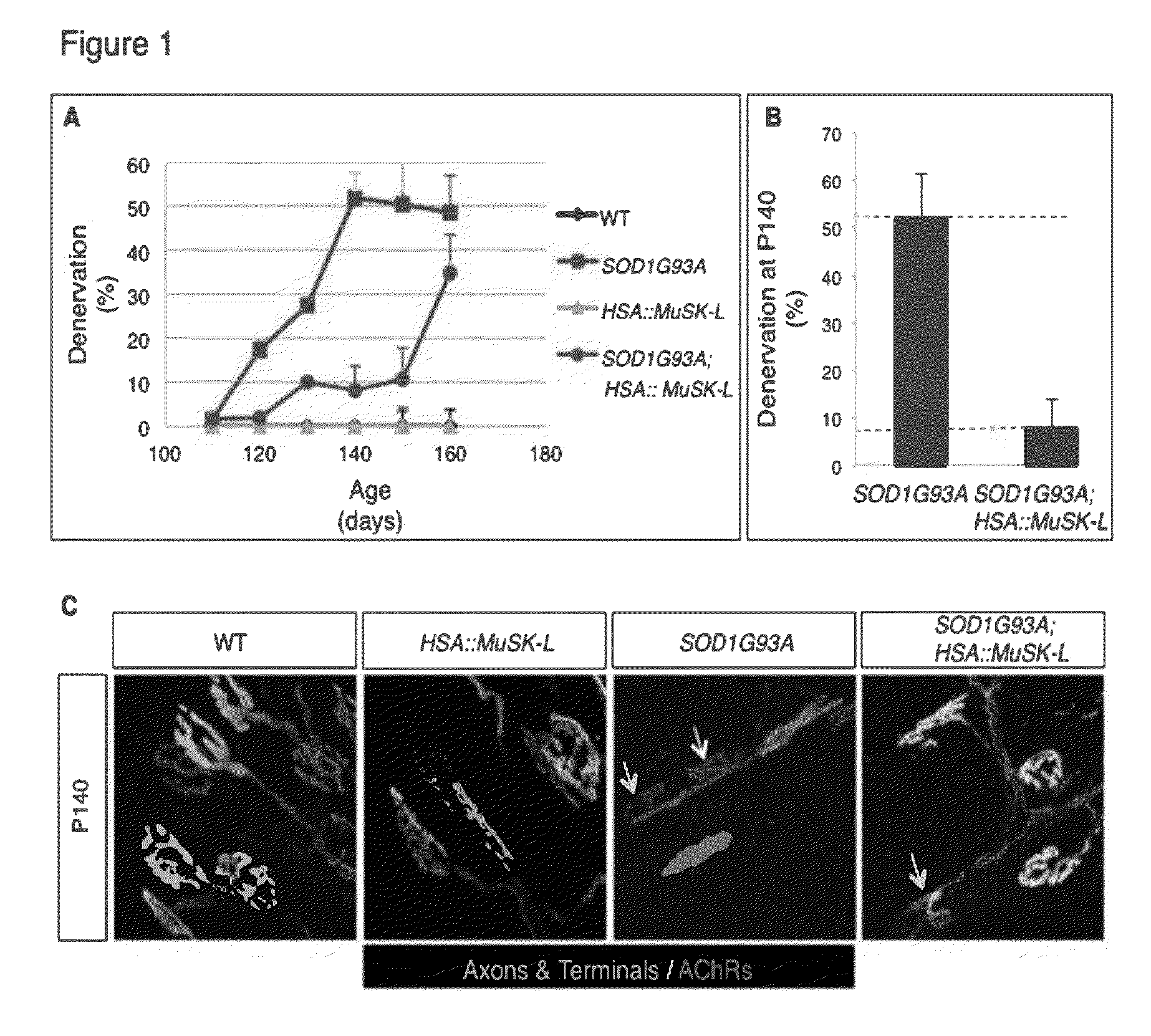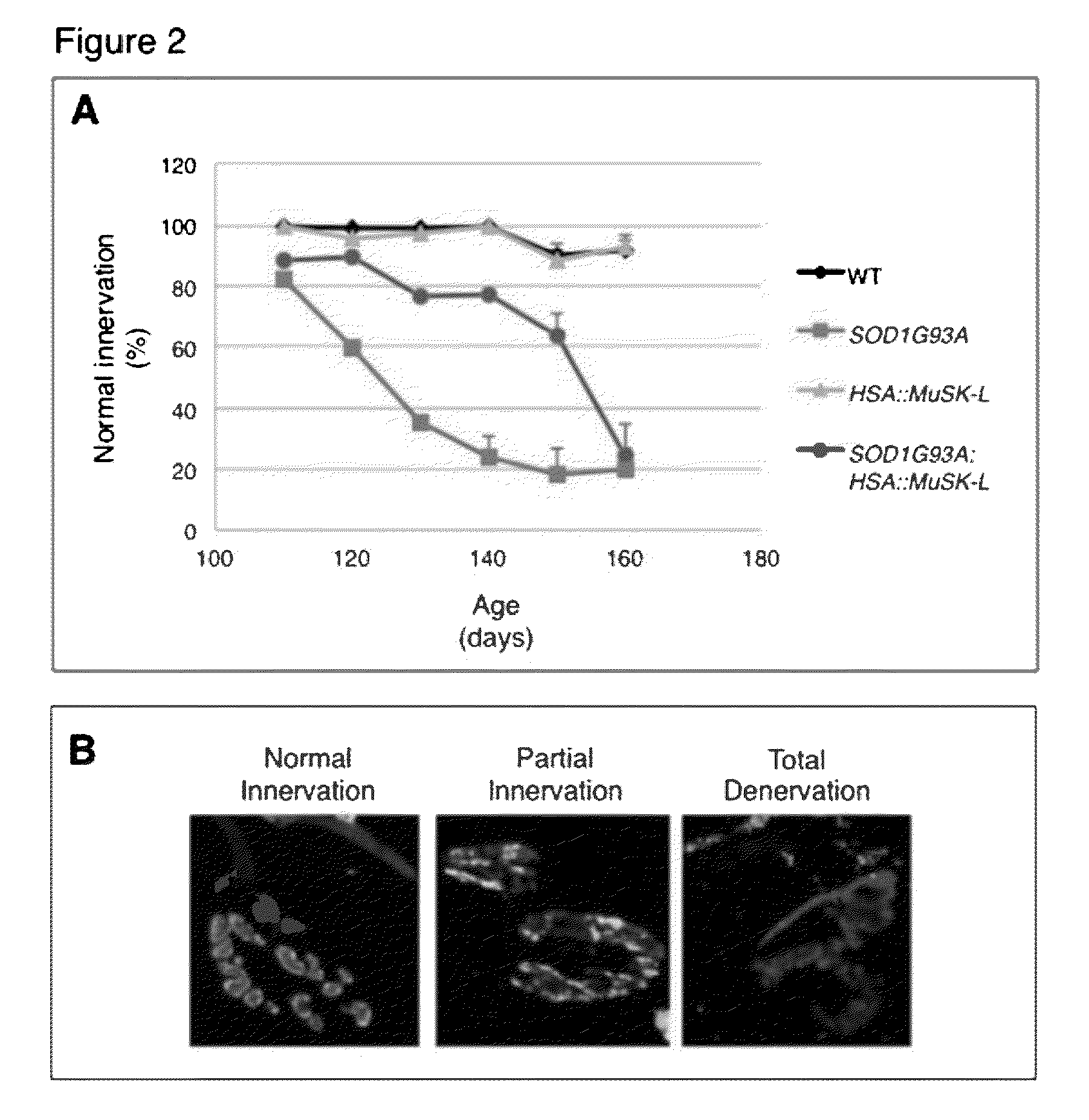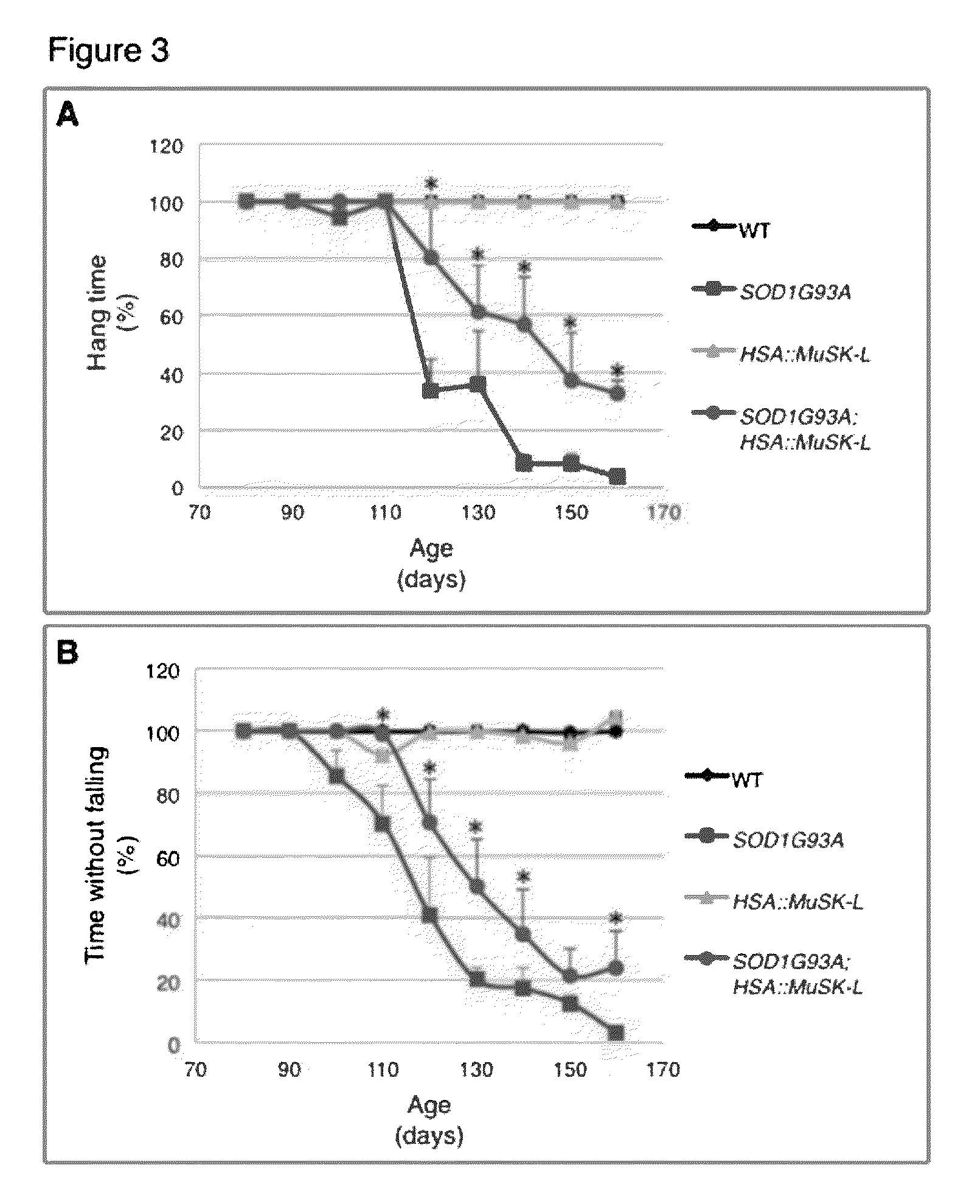Method of treating motor neuron disease with an antibody that agonizes MuSK
a motor neuron and antibody technology, applied in the field of muscle specific kinase receptor (muscle), can solve the problems of paralysis, respiratory failure, and ultimately premature death, and achieve the effects of prolonging the life of sod1g93a mice, preventing the denervation of skeletal muscle, and improving motor function
- Summary
- Abstract
- Description
- Claims
- Application Information
AI Technical Summary
Benefits of technology
Problems solved by technology
Method used
Image
Examples
example i
Experimental Procedures
Animals
[0160]Mice overexpressing human SOD1 (B6.Cg-Tg(SOD1-G93A)1Gur / J) were purchased from Jackson Laboratory (Bar Harbor, Me.) and crossed with HSA::MuSK-L transgenic mice, which were also maintained on a C57BL / 6J background (24). SOD1G93A mice were genotyped by PCR (5′-CATCAGCCCTAATCCATCTGA-3′ and 5′-CGCGACTAACAATCAAAGTGA-3′). Primers for IL-2 were used as an internal control (5′-CTAGGCCACAGAATTGAAAGATCT-3′ and 5′-GTAGGTGGAAATTCTAGCATCATCC-3′).
[0161]HSA::MuSK-L transgenic mice express 3-fold more MuSK than wild-type mice (Kim and Burden, 2008). Genotyping was performed by PCR (5′-GAAGCAACCTTTCCTTCCTGAG-3′ and 5′-ATTTTCCCTGAGAGCATTGTCC-3′). All experiments were approved by the Animal Care and Use Committee at NYU School of Medicine.
[0162]Diaphragm muscles from adult mice were dissected and fixed for 1.5 h at room temperature in 1% formaldehyde in phosphate buffered saline (PBS). Muscles were washed three times for 15 min in PBS, incubated...
example ii
[0179]Further to the above findings, the present inventor is investigating whether proven agonist antibodies to MuSK stimulate MuSK phosphorylation in vivo and likewise improve motor function in ALS mice.
[0180]As indicated herein above, previous studies have shown that agonist antibodies to MuSK stimulate MuSK phosphorylation in cultured myotubes (Xie et al., 1997). To explore the properties of these agonist antibodies to MuSK within the context of the present disclosure, an exemplary one of these antibodies, agonist antibody #13 of Xie et al. (1997), will be evaluated. Xie et al. describe agonist antibody, #13, as the most potent of these antibodies. Accordingly, agonist antibody #13 will be assessed to determine if this antibody stimulates MuSK phosphorylation in mice. Because ScFv and truncated (Fab) antibodies have short (1-2 hr) half-lives in vivo, corresponding full length IgG molecules that are deficient in effector functions (e.g., complement activation) will also be assesse...
PUM
| Property | Measurement | Unit |
|---|---|---|
| body weight | aaaaa | aaaaa |
| body weight | aaaaa | aaaaa |
| body weight | aaaaa | aaaaa |
Abstract
Description
Claims
Application Information
 Login to View More
Login to View More - R&D
- Intellectual Property
- Life Sciences
- Materials
- Tech Scout
- Unparalleled Data Quality
- Higher Quality Content
- 60% Fewer Hallucinations
Browse by: Latest US Patents, China's latest patents, Technical Efficacy Thesaurus, Application Domain, Technology Topic, Popular Technical Reports.
© 2025 PatSnap. All rights reserved.Legal|Privacy policy|Modern Slavery Act Transparency Statement|Sitemap|About US| Contact US: help@patsnap.com



